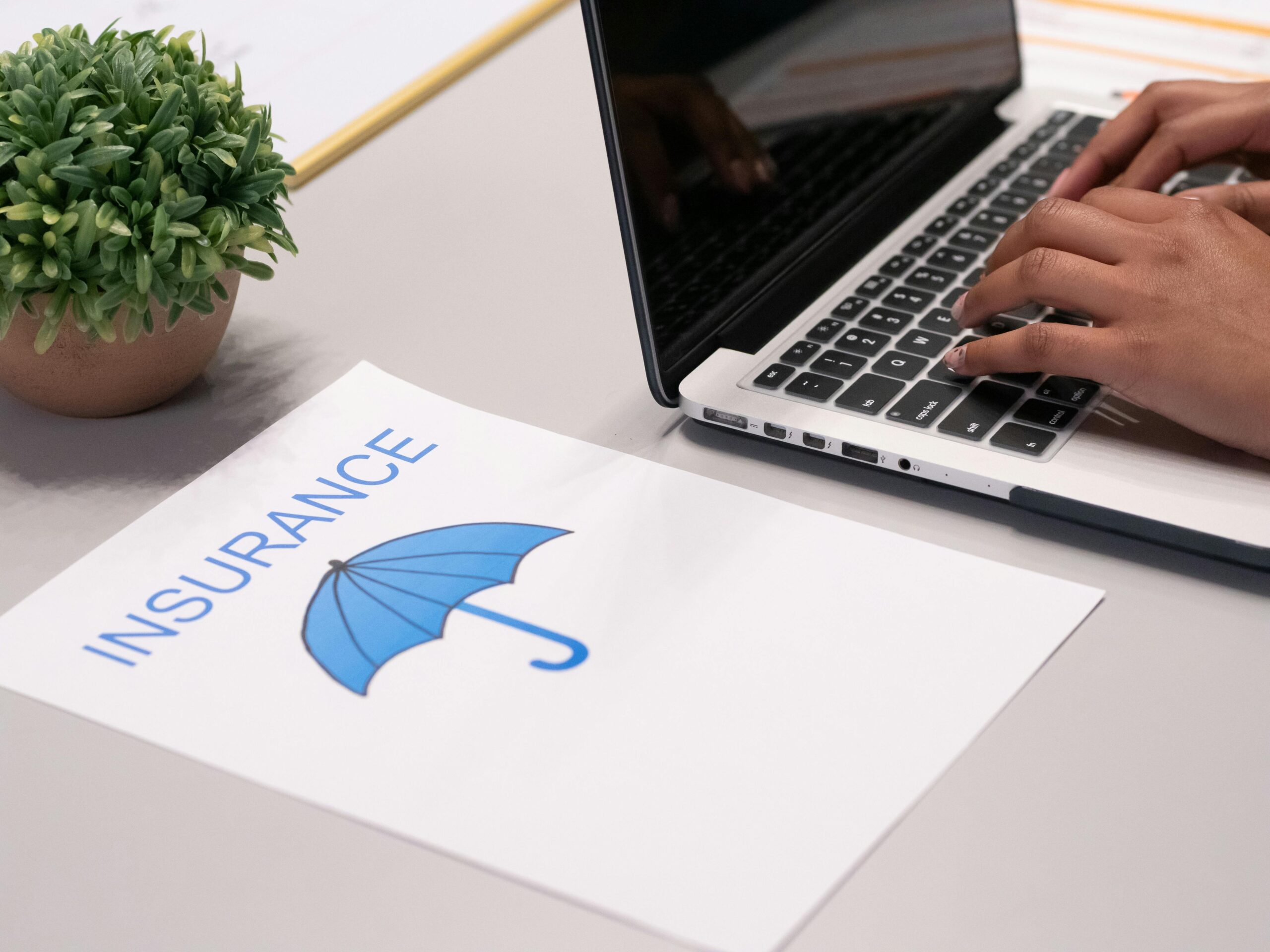The insurance industry is one of the most competitive sectors in the world, with countless companies fighting for the attention of customers. Whether it’s life insurance, health insurance, auto coverage, or niche products like pet or travel insurance, marketing plays a crucial role in winning trust and driving sales.
If you’ve ever wondered, “how do you market an insurance product?” the answer is not as simple as running ads. Insurance is a highly personal decision, requiring trust, education, and consistent engagement.
In this article, we’ll break down effective strategies, from traditional marketing methods to cutting-edge digital approaches, to help insurance providers succeed in 2025 and beyond.
Why Marketing Insurance Is Different From Other Products
Before diving into strategies, it’s important to understand why insurance marketing requires a unique approach.
-
Insurance is intangible – Unlike buying a car or a phone, customers can’t “see” or “touch” an insurance product. You’re selling peace of mind and protection.
-
Trust is critical – Customers want to feel secure that their money is safe and claims will be honored.
-
Long decision-making process – Many customers compare multiple providers, read reviews, and seek recommendations before making a purchase.
-
Highly regulated industry – Advertising must follow strict compliance rules, especially around claims and guarantees.
Because of these challenges, insurance marketers need a strategy that builds awareness, educates prospects, nurtures leads, and reassures buyers.
Step 1: Understand Your Target Audience
The foundation of successful insurance marketing lies in knowing who you are selling to.
-
Demographics: Age, income, family status, and location influence insurance needs.
-
Life stages: A 25-year-old may want health or renters insurance, while a 45-year-old might prioritize life or home insurance.
-
Pain points: For example, car owners worry about accident coverage, while parents worry about financial security for children.
Action tip: Create buyer personas. Example:
-
“Young Professional Paul” – 28 years old, single, earning $40,000/year, interested in affordable health insurance.
-
“Family-Oriented Fatima” – 40 years old, married, with two kids, seeking life and home insurance for long-term stability.
By mapping out customer personas, you can tailor your marketing messages effectively.
Step 2: Build a Strong Brand Identity
When someone asks, “how do you market an insurance product?” branding should be one of the first answers. A strong brand builds trust and recognition.
-
Logo & design consistency: Use professional colors, fonts, and imagery that reflect reliability and security.
-
Clear value proposition: Communicate what sets your insurance apart—affordable premiums, excellent customer service, fast claims, or specialized coverage.
-
Customer testimonials: Real stories from satisfied policyholders are more persuasive than any sales pitch.
Remember, insurance isn’t just about numbers—it’s about emotions. A customer who feels your brand “cares” will choose you over a faceless competitor.
Step 3: Leverage Digital Marketing Channels
1. Search Engine Optimization (SEO)
Since most people start their insurance journey with a Google search, ranking high is essential.
-
Optimize your website for keywords like “best life insurance for families”, “affordable health insurance in [city]”, or “car insurance quotes online”.
-
Create educational blog posts answering common questions (just like this one).
-
Use local SEO tactics if you serve a specific region.
Example: If you sell insurance in Dhaka, optimize content for “best car insurance in Dhaka.”
2. Pay-Per-Click (PPC) Advertising
Google Ads and Facebook Ads let you target specific demographics.
-
Use lead-generation ads offering free quotes.
-
Highlight key benefits like “low premiums,” “24/7 claims support,” or “trusted by 10,000+ families.”
-
A/B test your ad creatives and landing pages.
3. Content Marketing
Insurance is confusing for many people. By simplifying information, you establish authority.
-
Blog posts & guides: “How to Choose the Right Health Insurance in 2025.”
-
Videos: Short explainer clips on coverage options.
-
Infographics: Visual breakdowns of policy benefits.
Customers don’t just buy insurance—they buy confidence in their decision. Content helps you provide that.
4. Social Media Marketing
Platforms like Facebook, LinkedIn, Instagram, and even TikTok can be powerful tools.
-
Share customer success stories.
-
Run polls or quizzes (e.g., “What insurance do you need based on your lifestyle?”).
-
Use reels/shorts for quick tips like “3 mistakes to avoid when buying car insurance.”
Pro tip: LinkedIn is especially powerful for B2B insurance products, like employee group health plans.
5. Email Marketing
Insurance often requires nurturing leads over time.
-
Send newsletters with policy updates.
-
Offer personalized quotes via email.
-
Automate reminders for policy renewals.
Segment your list so young professionals get different emails than retirees.
6. Influencer & Affiliate Marketing
Trust is everything. Influencers in finance or lifestyle niches can endorse your products authentically. Affiliate partners like comparison websites also drive traffic and leads.
Step 4: Build Trust with Customers
Insurance customers are naturally cautious. Winning trust is key.
-
Offer free consultations – Help prospects without pressure.
-
Use transparent pricing – Avoid hidden fees.
-
Highlight awards & certifications – Third-party recognition reassures customers.
-
Provide strong customer support – Quick responses to inquiries can close deals.
Case study example: A health insurance provider in Bangladesh grew their client base by 45% after implementing a 24/7 WhatsApp support channel.
Step 5: Utilize Traditional Marketing (Still Effective)
Even in the digital age, traditional marketing methods still matter.
-
Print ads in newspapers/magazines – Especially effective for older audiences.
-
Television and radio ads – Build broad awareness.
-
Events & sponsorships – Insurance companies sponsoring marathons, health camps, or financial seminars gain exposure.
-
Billboards – High-traffic areas ensure brand visibility.
The trick is integrating offline marketing with your digital campaigns for maximum impact.
Step 6: Offer Competitive Incentives
Since insurance is price-sensitive, smart incentives can make a big difference.
-
Discounts for bundling (auto + home insurance).
-
Loyalty rewards for renewals.
-
Free add-ons like roadside assistance.
When customers feel they’re getting extra value, they’re more likely to choose your product.
Step 7: Track and Measure Performance
Marketing without measurement is like driving blindfolded.
-
Use Google Analytics to track website visitors.
-
Monitor ad conversion rates.
-
Track customer acquisition cost (CAC) vs. lifetime value (LTV).
-
Collect feedback through surveys.
By analyzing data, you can double down on what works and cut wasteful spending.
Emerging Trends in Insurance Marketing (2025 and Beyond)
Insurance marketing is evolving rapidly. Here are some trends shaping the future:
-
AI-driven personalization – Chatbots that recommend plans based on customer input.
-
Voice search optimization – More people ask Alexa or Google, “What’s the best car insurance near me?”
-
Micro-video content – 30-second reels explaining insurance terms.
-
Data-driven targeting – Predictive analytics to identify customers likely to need new coverage.
-
Green & ethical branding – Customers prefer insurers that align with sustainability and social responsibility.
Example Marketing Campaigns That Worked
-
Progressive’s “Flo” campaign – A relatable character that made insurance fun and accessible.
-
Geico’s “15 minutes could save you 15%” – A clear, catchy promise repeated across channels.
-
Prudential’s storytelling ads – Focusing on family and security, appealing to emotions rather than numbers.
The lesson? Keep it simple, relatable, and trustworthy.
FAQ: How Do You Market an Insurance Product?
Marketing insurance products is different from promoting regular consumer goods. Since insurance is intangible, trust-based, and often complex, customers need education, reassurance, and a clear understanding of value. Below are frequently asked questions that break down how to successfully market insurance in today’s competitive landscape.
1. Why is marketing insurance different from other products?
Insurance is not a physical product customers can hold—it’s a promise of financial protection. Unlike electronics or clothing, insurance involves emotional decision-making, regulatory compliance, and long-term trust. Customers must feel confident that the company will be there for them when needed. This makes marketing insurance less about “hard selling” and more about relationship-building and education.
2. What is the first step in marketing an insurance product?
The first step is understanding your target audience. Different demographics require different insurance solutions. For example:
-
Young professionals often look for affordable health or renters’ insurance.
-
Families usually prioritize life, home, or auto insurance.
-
Retirees may be interested in health and long-term care coverage.
Creating buyer personas helps craft personalized marketing messages that connect with each group.
3. How important is branding in insurance marketing?
Branding is crucial because customers choose insurance providers they trust. A strong brand identity—professional logo, consistent messaging, clear value proposition, and testimonials—can set you apart from competitors. Since people associate insurance with security and peace of mind, branding should emphasize reliability, care, and transparency.
4. How can digital marketing help sell insurance?
Digital marketing is the backbone of modern insurance promotion. It includes:
-
SEO (Search Engine Optimization): Ranking for searches like “affordable health insurance near me.”
-
PPC (Pay-Per-Click Ads): Paid campaigns that generate quick leads.
-
Content Marketing: Blogs, guides, and videos explaining policies.
-
Social Media: Engaging audiences through posts, reels, and polls.
-
Email Marketing: Nurturing leads with updates and renewal reminders.
Digital channels help build visibility, attract leads, and convert prospects more effectively than traditional ads alone.
5. What role does SEO play in insurance marketing?
SEO ensures that when potential customers search online for insurance solutions, your company appears at the top. For example:
-
Using keywords like “best life insurance for families” or “cheap car insurance in Dhaka.”
-
Writing informative blog posts answering common questions.
-
Optimizing Google Business Profiles for local visibility.
Since many buyers research online before making decisions, strong SEO can significantly increase lead generation.
6. How can social media be used to market insurance products?
Social media builds trust and awareness. Effective tactics include:
-
Sharing customer success stories.
-
Posting explainer videos about coverage.
-
Running polls or quizzes to engage followers.
-
Using LinkedIn for B2B insurance marketing (e.g., employee health plans).
Platforms like Facebook and Instagram also allow targeted advertising, reaching users by age, location, and interests.
7. Is content marketing really necessary for insurance?
Yes, because insurance is complex. Many customers struggle to understand terms like “deductible” or “premium.” By producing blogs, guides, infographics, and explainer videos, insurers can educate customers and establish themselves as trusted advisors. This not only improves brand authority but also helps customers make informed decisions, increasing conversions.
8. How effective are traditional marketing methods for insurance?
While digital marketing dominates, traditional methods remain effective, especially for older demographics.
-
Newspaper and TV ads reach broad audiences.
-
Billboards build brand recognition in high-traffic areas.
-
Community events and sponsorships foster trust at the local level.
The best approach often combines traditional and digital strategies.
9. How do customer testimonials help in marketing insurance?
Insurance is built on trust, and nothing is more powerful than real stories. Testimonials and case studies reassure potential buyers that others have had positive experiences. Videos of customers explaining how their insurer supported them during tough times can be especially persuasive.
10. How do insurance companies build trust with potential customers?
Trust can be built by:
-
Offering free consultations.
-
Displaying certifications, awards, and compliance badges.
-
Providing transparent pricing without hidden fees.
-
Offering 24/7 customer service.
When customers feel secure, they’re more likely to sign up.
11. Can incentives help in selling insurance policies?
Yes. Insurance is often price-sensitive, so incentives encourage customers to choose one provider over another. Examples include:
-
Discounts for bundling auto + home insurance.
-
Loyalty rewards for renewals.
-
Free add-ons like roadside assistance or health check-ups.
These value-added offers make customers feel they’re getting more than just a policy.
12. What role does email marketing play in insurance promotion?
Email marketing is highly effective for nurturing leads. It allows companies to:
-
Send personalized policy recommendations.
-
Remind customers of renewals.
-
Share educational content and tips.
-
Offer exclusive discounts.
Since insurance involves long decision-making, email keeps your brand top-of-mind until customers are ready to buy.
13. How can data and analytics improve insurance marketing?
Tracking performance helps marketers identify what works. Tools like Google Analytics and CRM software measure:
-
Website traffic.
-
Conversion rates from ads.
-
Cost per lead.
-
Customer lifetime value (CLV).
By analyzing data, insurers can adjust strategies, reduce wasted spend, and increase ROI.
14. What are the latest trends in insurance marketing for 2025?
Emerging trends include:
-
AI-powered chatbots for instant customer support.
-
Voice search optimization for smart speakers.
-
Short-form videos on TikTok, Instagram, and YouTube Shorts.
-
Hyper-personalization using predictive analytics.
-
Green branding that highlights ethical and sustainable business practices.
Keeping up with these trends ensures insurers stay competitive.
15. Do influencers and affiliates help in insurance marketing?
Yes, especially in building credibility. Financial advisors, lifestyle bloggers, and trusted community influencers can promote insurance products to their audiences. Similarly, affiliate partnerships with comparison sites drive high-quality leads. Since people trust peer recommendations, this method often yields strong results.
16. How long does it take to see results from insurance marketing campaigns?
It depends on the channel:
-
SEO & content marketing: 3–6 months to build organic traffic.
-
PPC ads: Almost immediate results if done correctly.
-
Brand campaigns: Long-term results through consistent exposure.
For best results, combine quick-win tactics (ads) with long-term investments (SEO, content, branding).
17. What mistakes should insurance marketers avoid?
Some common pitfalls include:
-
Using too much jargon that confuses customers.
-
Focusing only on price instead of value.
-
Ignoring compliance rules in advertising.
-
Not following up with leads quickly.
-
Failing to measure campaign effectiveness.
Avoiding these mistakes can save money and improve trust.
18. Can small insurance agencies compete with big brands?
Yes, by focusing on personalization and local trust. Small agencies can offer a more human, relationship-based approach compared to large corporations. Digital tools also level the playing field, allowing smaller players to run targeted ads, build websites, and engage customers at a fraction of the cost.
19. How important is customer service in insurance marketing?
Extremely important. A positive customer service experience can turn a one-time buyer into a loyal advocate who refers others. On the other hand, poor service can lead to negative reviews that harm reputation. Quick claims processing, easy communication, and empathetic staff can make a huge difference.
20. What’s the single most important factor in selling insurance?
Trust. Price, coverage, and promotions matter, but ultimately, people buy insurance from companies they trust. Every marketing effort—from ads to social media posts—should reinforce reliability, honesty, and customer care.
Final Thoughts
So, how do you market an insurance product?
The answer lies in combining education, trust-building, and multi-channel marketing. Start by understanding your audience, build a strong brand, and use both digital and traditional methods. Add personalization, incentives, and consistent follow-ups, and you’ll stand out in a competitive market.
Insurance may not be a product people “want” to buy, but it is something they need. By focusing on trust and value, you can turn hesitant prospects into loyal policyholders.




